5 Tips on How to Overcome Creative Block From Professional Artists
Creative block can strike at any time, stifling your inspiration and grinding your productivity to a halt. It’s something anyone who has tackled a creative project has experienced at one time or another.
These mental barriers are especially frustrating for artists, whose lives depend on harnessing their creativity. However, that also means that no one knows more about overcoming creative block than artists.
If you’re looking for ways to re-ignite your imagination, here are five helpful tips from working artists on how to get your creative side flowing again.
1. Take Notes
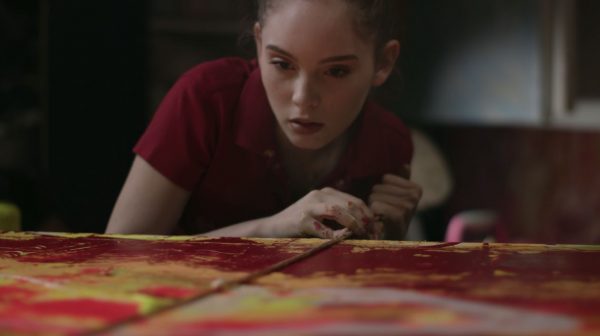
Autumn de Forest concentrates while using her “pull painting” technique.
It may be a bit old-fashioned, but having a pen and paper on hand to jot down ideas can be a life saver when creative blocks occur. Even art prodigy Autumn de Forest, who has been selling her art since she was 6 years old, uses this method frequently.
“If I’m stuck, I have notebooks full of ideas for paintings,” de Forest says. “I can just look through those, and I come up with ideas every day and I write things down.”
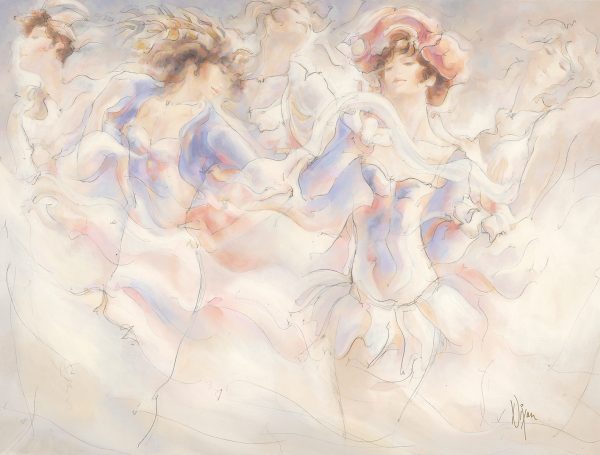
“Dance Troupe II” (2006), Peter Nixon
Acclaimed British artist Peter Nixon is a fan of this method as well. He says he is always on the lookout for subject matter for his artwork, so he carries a notebook to record any ideas that strike him.
“It’s like having somebody constantly tapping you on the shoulder, saying ’Oh by the way, what about this idea?’” Nixon says. “So you get the book out and you have to write the ideas quick because they go.”
2. Let Yourself Experiment
If the sight of a blank page, canvas, or computer screen paralyzes you, learning to overcome that fear can really unlock your creative potential. Just forcing yourself to put the pen to the paper or the brush to the canvas is a great first step, even if you make mistakes.
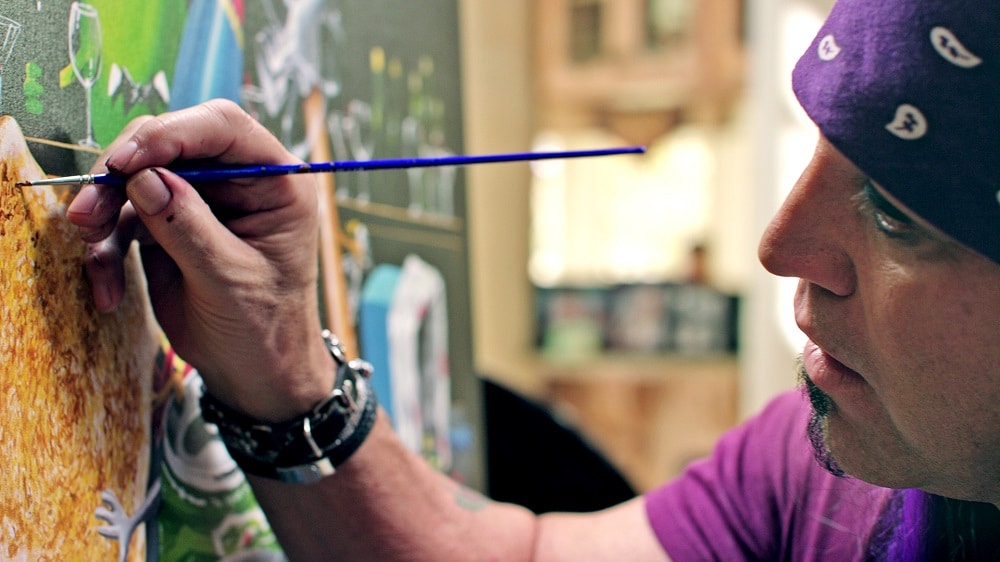
Michael Godard adding intricate details to one of his paintings.
Best-selling artist Michael Godard is often called the “Rock Star of the Art World,” but he always remembers his art school days. One of his instructors started a class by having students take a large sheet of untouched paper and scribble all over it. Godard was appalled at first—he came from humble beginnings so he hated the idea of wasting paper—but he quickly recognized the lesson being taught.
“His intention was to not be afraid of a blank canvas,” Godard says. “Today, when people ask me ‘Do you ever get artist block?’ I go ‘No, I’m not afraid to just start and scribble and completely destroy. . .a perfect white canvas.’”
3. Meditate
Israeli artist David Najar compares being creative to connecting to a Wi-Fi signal. Sometimes it is easy to connect and the signal is strong, but other times it is tough and, as he puts it, “you don’t have the pass code.” In those times, he suggests searching for the creative signal through introspection.
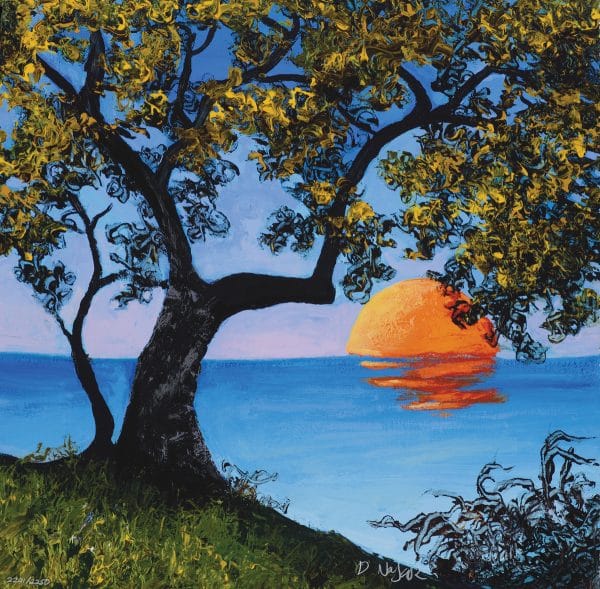
“Eye on the Horizon” (2017), David Najar
“Be with yourself, think, imagine. . .kind of like meditation,” Najar says. “Artists don’t need to wait ‘til someone brings it, they need to do it themselves.”
Artist Dominic Pangborn, founder of Pangborn Design, takes a similar, albeit more analytical approach. He says he hasn’t necessarily encountered his own “artist block,” but occasionally struggles with executing an idea. To overcome this, he takes a step back and examines the situation.
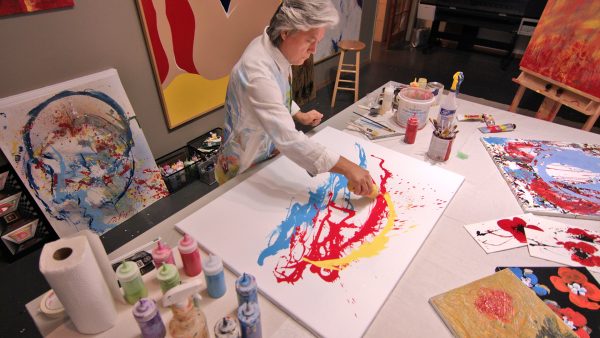
Dominic Pangborn working in his studio.
“I look to ‘What’s my objective? Why? How?’ Upon answering those questions I’m clear, focused,” Pangborn says. “This gives me the direction and ideas are clear and ‘how to execute’ takes over. That process may alter the idea. I let it flow where the idea and execution emerge.”
4. Dive into Research
One way to get past an imagination block is to explore the words and works of other creative minds. This could be anything from watching a tutorial video, taking a stroll through a museum, or reading a helpful article.
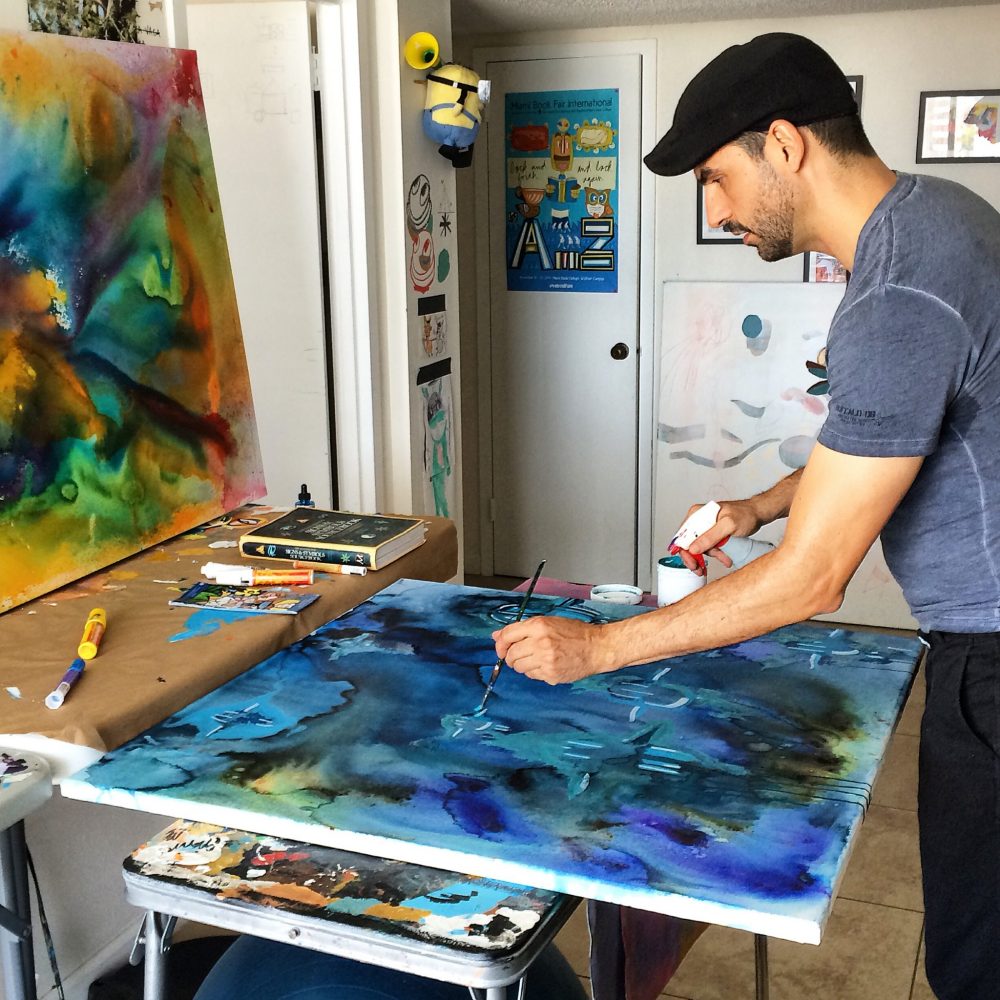
Lebo painting in his Miami studio.
Miami artist David “Lebo” Le Batard believes artists see themselves as either a creator or a conduit for creation. He views himself as the latter, and therefore keeps his mind prepared for when inspiration strikes. Lebo achieves this zen-like approach by reading up on mythology, philosophy, or any other subject that interests him.
“I do my best to clear my channel to be a vessel for creation,” Lebo says. “For this reason I feel it’s never a matter of being blocked, but rather sorting through so many wonderful ideas that are all around us.”
5. Step Away
If you’re stuck, sometimes the best thing to do is take a break and do something else. English artist Clare Sykes says when she isn’t in the mood to create she invigorates herself with walks and conversation.
“It can take the whole day to finally get that urge to use the imagination,” Clare says. “I will take myself along the seafront or into the local parks and catch up with happy friends to lift my inspiration and start creating.”
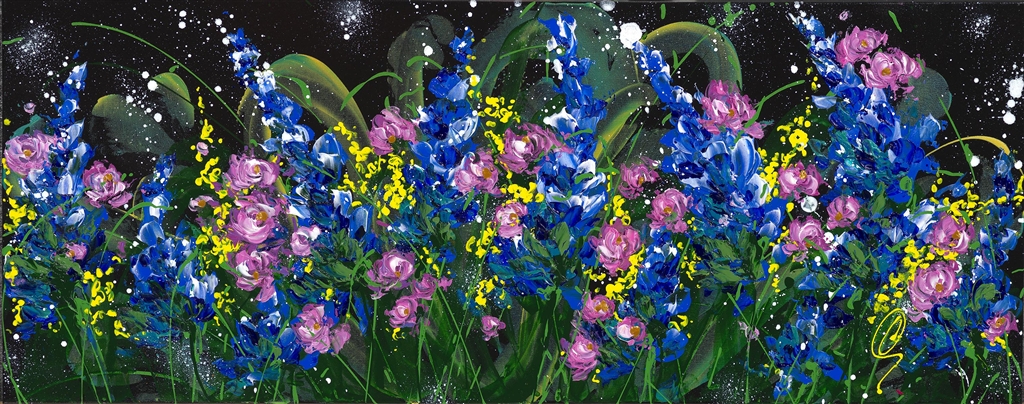
“Summertime Magic” (2018), Clare Sykes
Remember—it was Pablo Picasso who said, “Inspiration does exist but it must find you working.” These artist tips can help you tackle your creative block, but it’s up to you to sit down, commit to tackling the problem, and explore ways to rediscover your creativity.
Want some more inspiration? Be sure to check out Park West Gallery’s series of artist profile videos to learn more about the creative processes of our artists.





